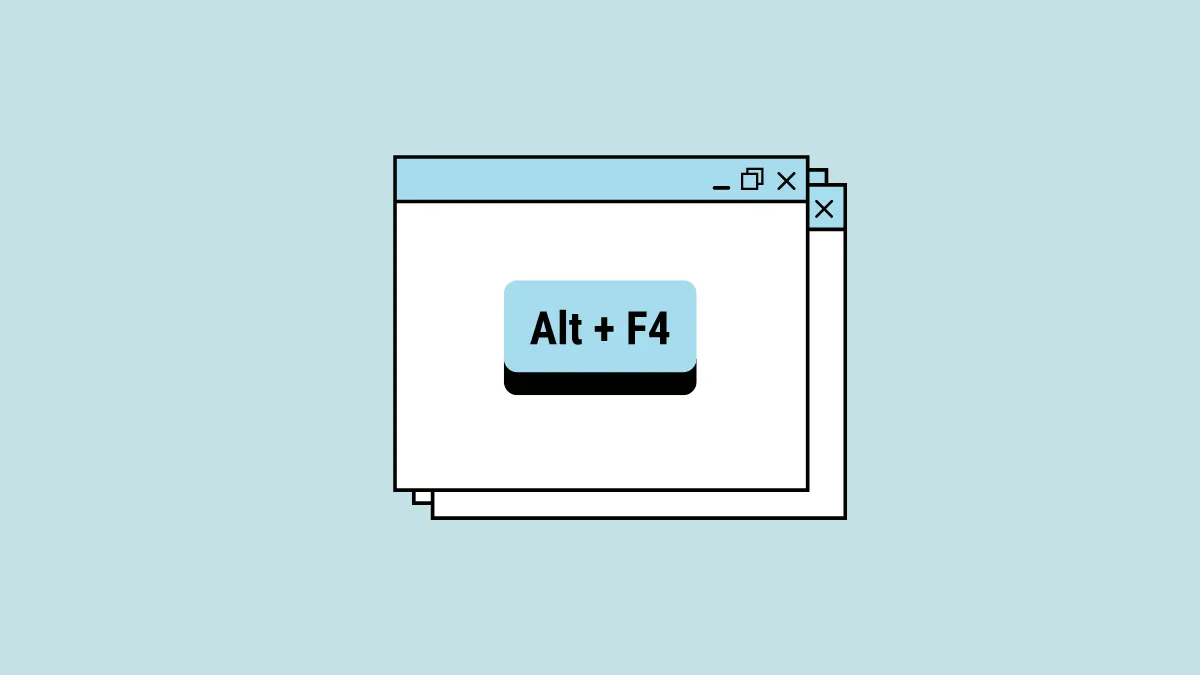Windows users often encounter frustration when faced with an unresponsive program that refuses to close. This issue can make it challenging to terminate an app or program, even when attempting to do so by clicking the X mark. Fortunately, Windows 11, in line with previous versions, offers various effective methods to quit unyielding apps or programs forcefully.
Use the 'Alt+F4' Keyboard Shortcut
This is the most elementary method to try if you are not able to close the app using the 'X' button.
- Make sure the app window is in the foreground, which you wish to close. If any other app window is in focus, the computer will close that one.
- Once the app window is in focus, simply press
Alt+F4on your keyboard to exit the app.
Enable the 'End Task' Option in Taskbar
If you are running a Windows 11 version 23H2 or newer, you can also add an 'End Task' button to kill the apps right into the Taskbar. Since the Taskbar is always accessible, this method offers great convenience.
- Open the Start Menu and click on the 'Settings' icon. Alternatively, you can press
Windows+Ikeys simultaneously on your keyboard to open the app.
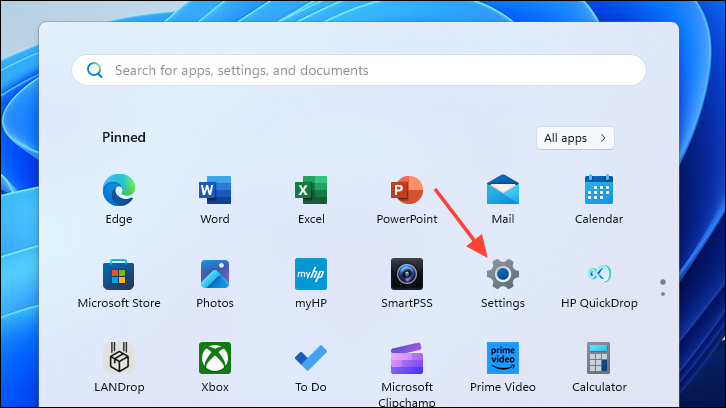
- Ensure you have selected the 'System' tab from the left sidebar.
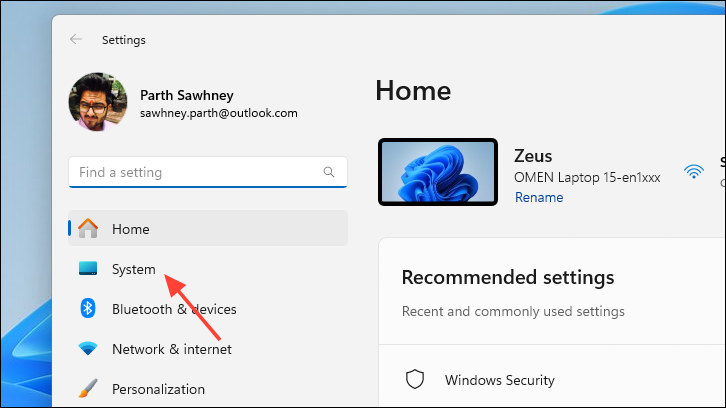
- From the right section of the window, click on the 'For Developers' option.
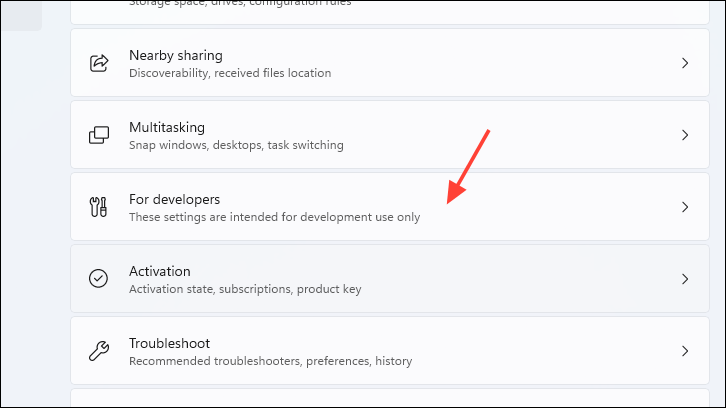
- On the subsequent screen, turn on the toggle for 'End Task'.

- You can now right-click on the app thumbnail on the Taskbar and choose the 'End Task' option to force-quit the app.
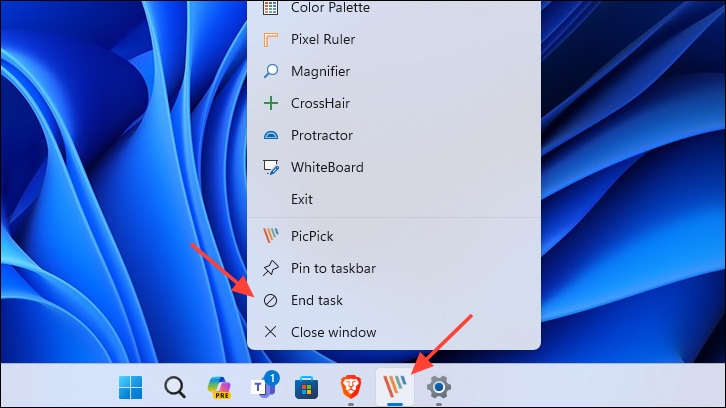
Force Quit an App from the Task Manager
- Right-click on the Taskbar and select 'Task Manager' to open it.
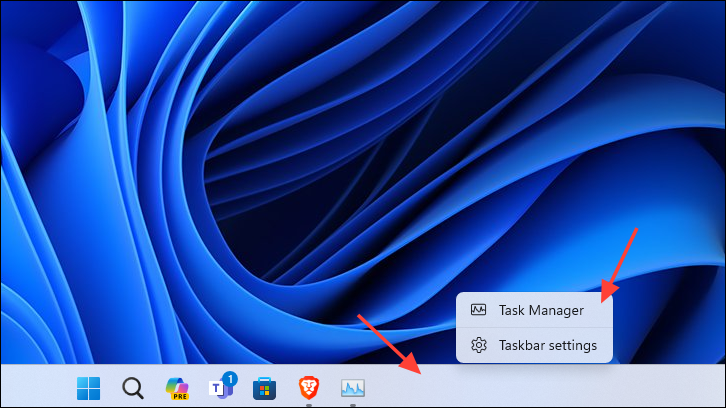
- Ensure you have selected the 'Processes' tabs from the left sidebar.
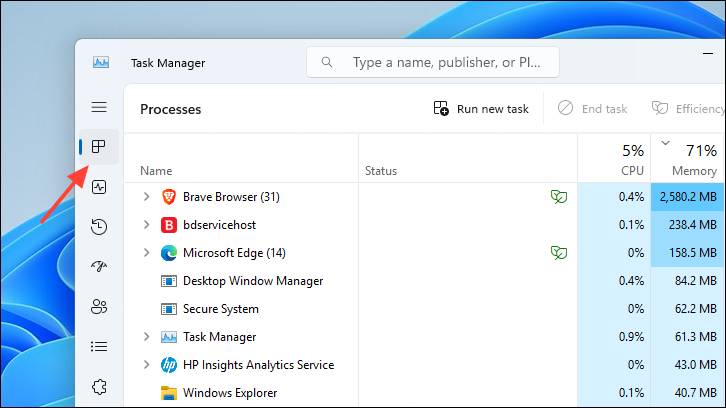
- Right-click on the app that you wish to close and select 'End Task' from the list. Alternatively, you can click to select it and then choose the 'End Task' option in the top right of the window.
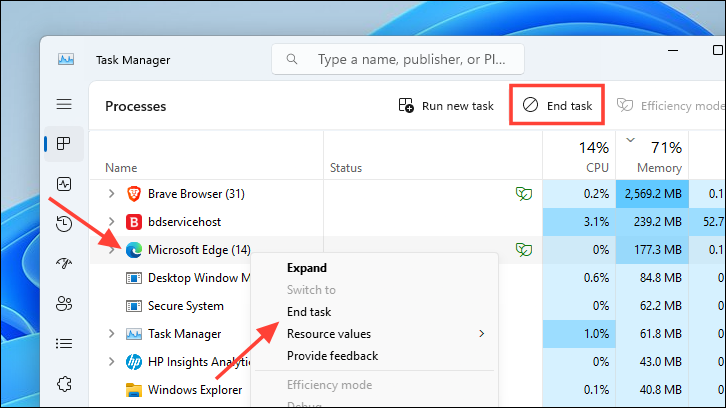
End Process Tree Instead
You might come across stubborn apps that won't close or will relaunch themselves automatically. For such instances, you can end the complete process tree, which basically means killing every process associated with the app.
- Right-click on the stubborn app that won't close. Then, select the 'Go to details' option from the list. This will redirect you to the 'Details' tab on the Task Manager.
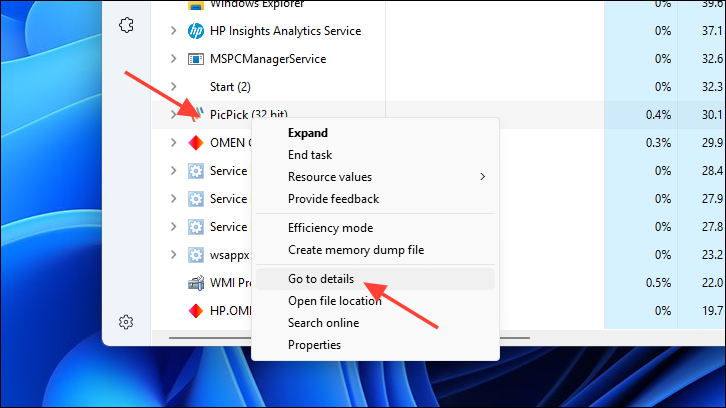
- The process associated with the app will be highlighted. Right-click on it and select the 'End process tree' option from the menu. This will kill the app and all its related processes.
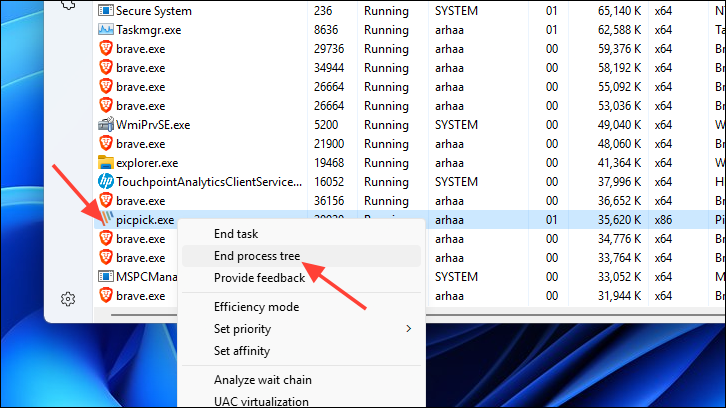
Force Close an App using the Command Prompt
If, for some reason, you are not able to terminate the app from Task Manager; you can force quit them using the Command Prompt.
- Open the Start Menu and type 'Terminal'. From the search results, right-click on the 'Terminal' tile and select the 'Run as administrator' option.

- On the Terminal window, click on the chevron (downward arrow) and select the 'Command Prompt' option. This will open Command Prompt in a new tab.

- Type or copy and paste the below-mentioned command to view the list of all active tasks on your computer.
tasklist
- Identify the task from the list that you wish to kill. Then, type or copy and paste the below-mentioned command and hit
Enterto execute. This will immediately kill the task.
taskkill /im <programname>.exe /t /f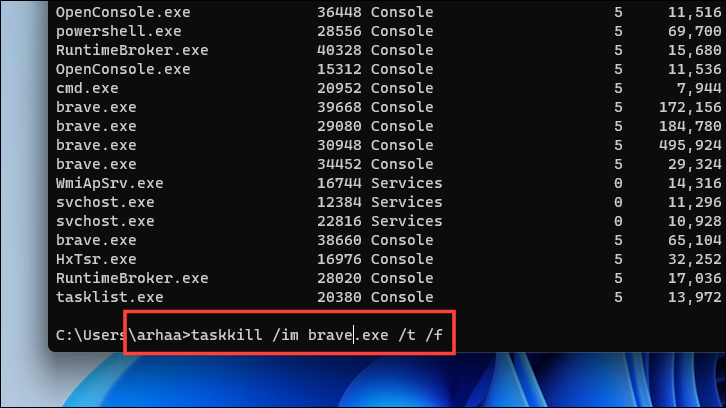
- You can also kill tasks using their PID (Process ID). The PID is the number following the task name. To do so, type or copy and paste the below-mentioned command and hit
Enterto execute.
taskkill /pid <ProcessID> /t /f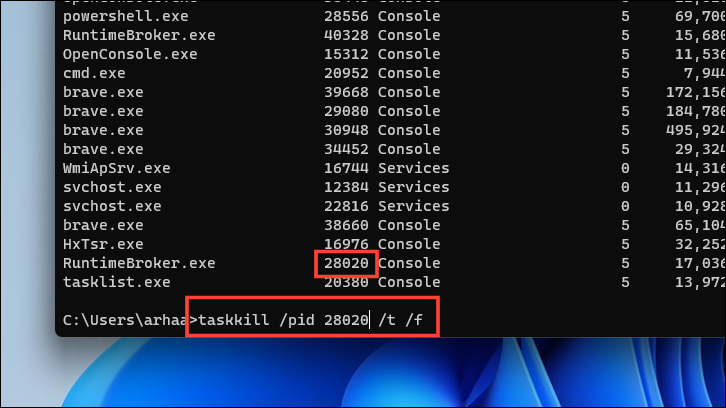
Create a Shortcut to Force Close Non-responding Apps
If you regularly face non-responding apps, you can quickly create a Desktop shortcut to terminate all of them in a single go. Do note this method will terminate all the apps that have their status as 'not responding'.
- Right-click on the Desktop and hover over the 'New' option. Then, choose 'Shortcut' from the sub menu.
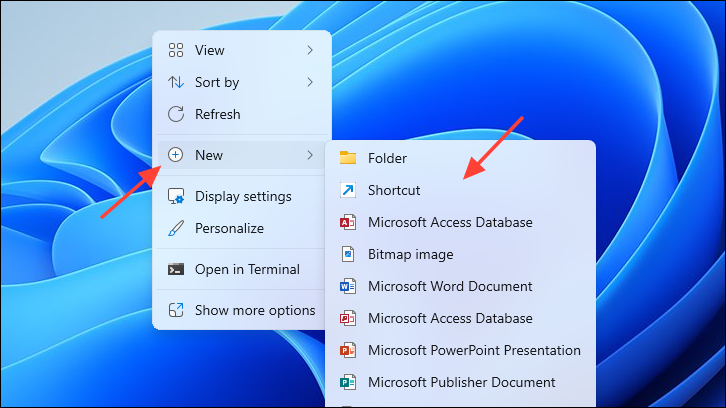
- On the 'Create Shortcut' window, type or copy and paste the below-mentioned command and click on 'Next'.
taskkill /f /fi "status eq not responding"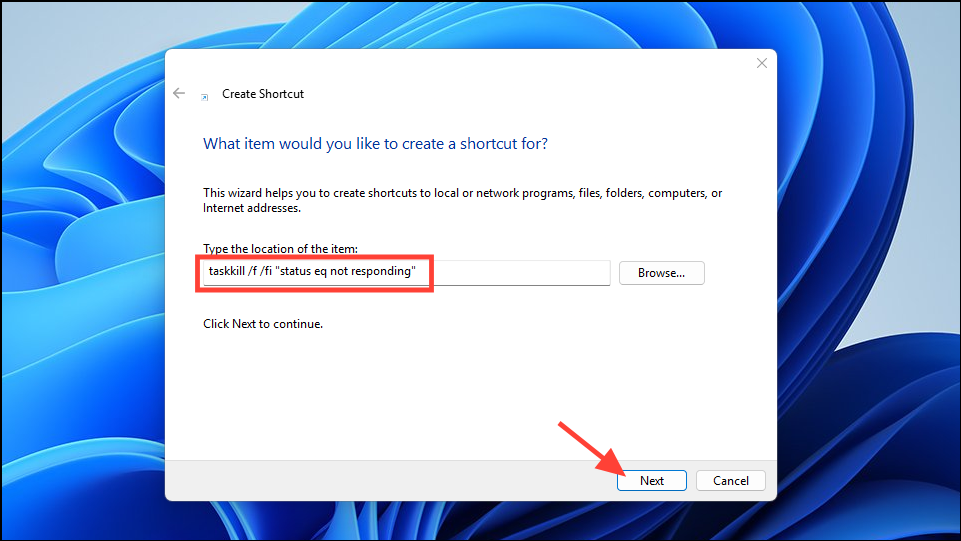
- On the subsequent screen, provide an apt name for your shortcut and click on 'Finish'.
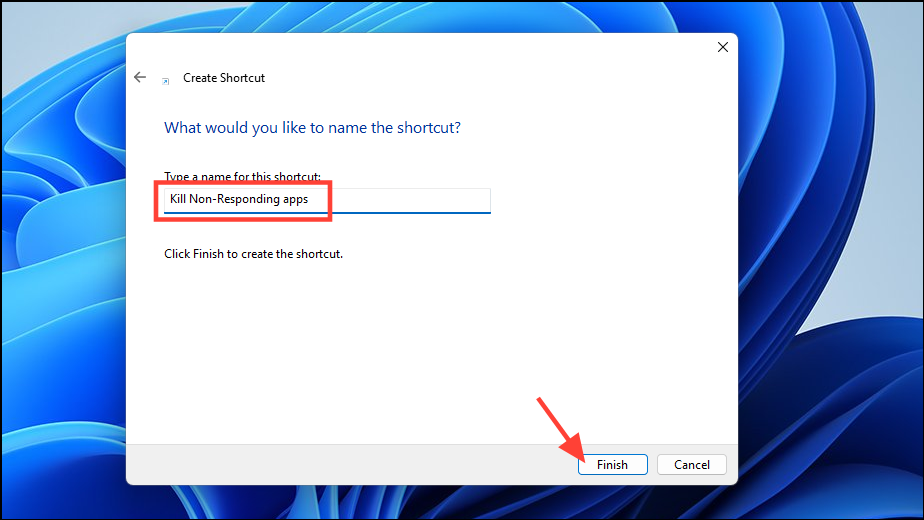
- The shortcut will now be visible on your Desktop. Whenever you want to kill non-responsive apps on your computer, just double-click on the shortcut.

Restart your Computer
If any of the above-mentioned methods are not working (which is very unlikely), as a last resort, save your work on all other currently open apps and restart your PC from the Start Menu.
This will flush the app and its related services from RAM (Random Access Memory) and will help you start afresh. Such issues can stem from a deadlock of processes and is highly unlikely.
If it is the same app that is consistently exhibiting non-responsive behavior, it would be best to reach out to its developers so they can look into it. You can usually find a way to reach the app developers on their app's website.
To restart your computer, open the Start Menu and click on the 'Power' icon. Then, choose 'Restart'.

A frozen or non-responsive app can be very frustrating to deal with. Thankfully, the above-mentioned methods will definitely

